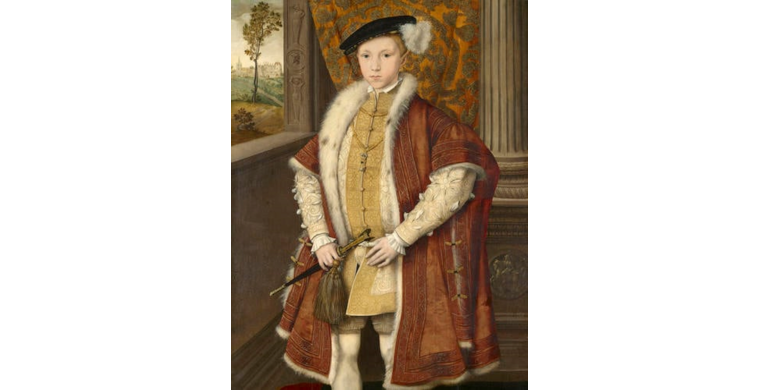EDWARD VI: England's First Protestant Monarch Inspires the Protestant Reformation
By Chuck Collins
www.virtueonline.org
January 31, 2024
Could a fifteen-year-old boy possibly contribute to the debates and challenges facing a King of England, much less when he first took the throne when he was nine?
On January 28, 1547 Edward VI, the son of Henry VIII and Jane Seymour, became King of England & Ireland. Historian Diarmaid MacCulloch asserts that in Edward's thirteenth year the boy-king began to lead especially in the realm of religion. And with the tsunami of changes to church and state in his six years as king, MacCulloch contends that the Church of England can fairly be called "Edward's church."
He was England's first Protestant monarch, and during his short reign, and with the help of his protectorates (the dukes of Somerset and Northumberland), the Church of England was firmly planted in the way of the Protestant Reformation.
The chief theological architect of those changes was Thomas Cranmer, the Archbishop of Canterbury. Cranmer wrote the confession for the Church of England (The Articles of Religion, later called the "Thirty-nine Articles"), edited and contributed to the first book of Homilies (sermons to be read sequentially in all churches), and he crafted the famous Book of Common Prayer - these are the historic Anglican formularies that still constitute the backbone of what Anglicans around the world believe. Edward died at the age of 15 in 1553, but the reforms he established survived Queen Mary and would be finally settled by his half-sister, Queen Elizabeth I (the "Elizabethan Settlement").
MacCulloch insightfully points out that the changes made in the Church of England were seen in three new pieces of furniture that were added to churches in Edwardian England: a wooden table, a poor box, and a pulpit.
Moveable wooden tables replaced stone altars across the kingdom as a visual reminder to everyone that the Medieval mass was no longer the religion of the land. The "real presence of Christ," for those in the Church of England, honors the central teaching of Holy Scripture: salvation by grace through faith alone. Cranmer taught, and it was written into our Anglican formularies, that Christ is spiritually present in the eucharist, not in the elements of bread and wine such that we would worship these and gaze upon them, but rather in the hearts and affections of those who receive the grace of the sacrament by faith. Jesus gives himself to "such as rightly, worthily, and with faith, receive the same" (Article 28).
A poor box to collect alms was ordered to be placed in every church serving as a continual reminder that the people's offerings were not to support a wealthy and corrupt clerical class or to furnish ornate churches, but for the primary mission of the church and to help the lost and the least for the sake of Christ.
And pulpits became front and center in church architecture to reinforce the clear message that God is heard most directly in the Bible and in the proclamation of the Bible's message. MacCulloch wrote that "the pulpit would remain the central visual emphasis of most English parish churches down to the nineteenth century, when the Oxford Movement, in a remarkably successful piece of theological alchemy, restored the primacy of the altar."
The Boy King: Edward VI and the Protestant Reformation, Diarmaid MacCulloch














